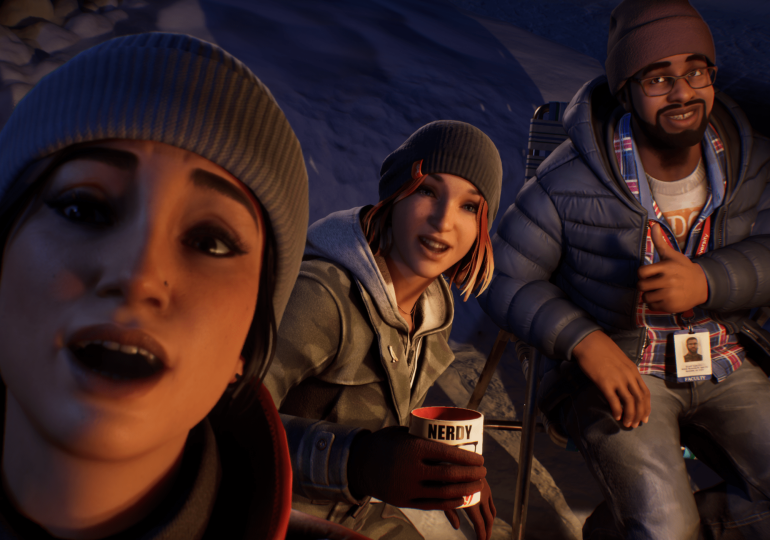Life Is Strange: Double Exposure isn’t your typical murder mystery game. Instead of being a half-baked Choose Your Own Adventure, Double Exposure is an intuitive and mostly player-driven psychological drama that rewrites the dialogue between an artist and an audience, and which invites its own audience to investigate the importance of self-acceptance.
Developed by Deck Nine, Double Exposure is a direct sequel to 2015’s Life Is Strange, and much like the studio’s previous work on True Colors and Before the Storm, it is a serialized whodunit that eventually turns into a “what the hell is going on?” Taking place 10 years after the tragedies of Arcadia Bay, Oregon, it follows Max Caulfield — who was also the protagonist of the 2015 game, and whose life has since circled around to Lakeport, Vermont, where she works as a new photographer-in-residence at Caledon University. Max is still Max — she still is dreadfully awkward at flirting, has a knack for sneaking into people’s rooms, and thinks The Return of the Living Dead is a zombie apocalypse masterpiece — but she hasn’t used her time-rewind powers in nearly a decade, as they have only caused her “more problems and even more heartbreak,” in her words. That is, until her new best friend for life, Safiya Llewellyn-Fayyad, is murdered at a campus lookout, and Max discovers that her ability to reverse reality has evolved into being able to tear open a subdivision of the astral plane and jump between two alternating timelines.
Max might not be able to rewind her own choices, but her new powers allow her to live with them and examine any ripple effects that follow. Mechanically, Max can now use an ability called Pulse to view timelines from her current world, and her new Shift ability to create a metaphysical portal that allows her to traverse the two realities at set locations throughout Caledon. She can also use yet another ability, called Entanglement, to intertwine objects between the two timelines. All three abilities allow her to explore different scenarios, puzzles, secrets, zen moments, and dialogue options that aren’t fixed to a singular narrative. Double Exposure still adheres to the Life Is Strange series’ popular trademark of having major and minor choices alter environments and interpersonal relationships — like accepting a joint from a fellow professor or changing the grade on a student’s paper — but the reality surfing also allows players to dive into anecdotes on who Max has become.
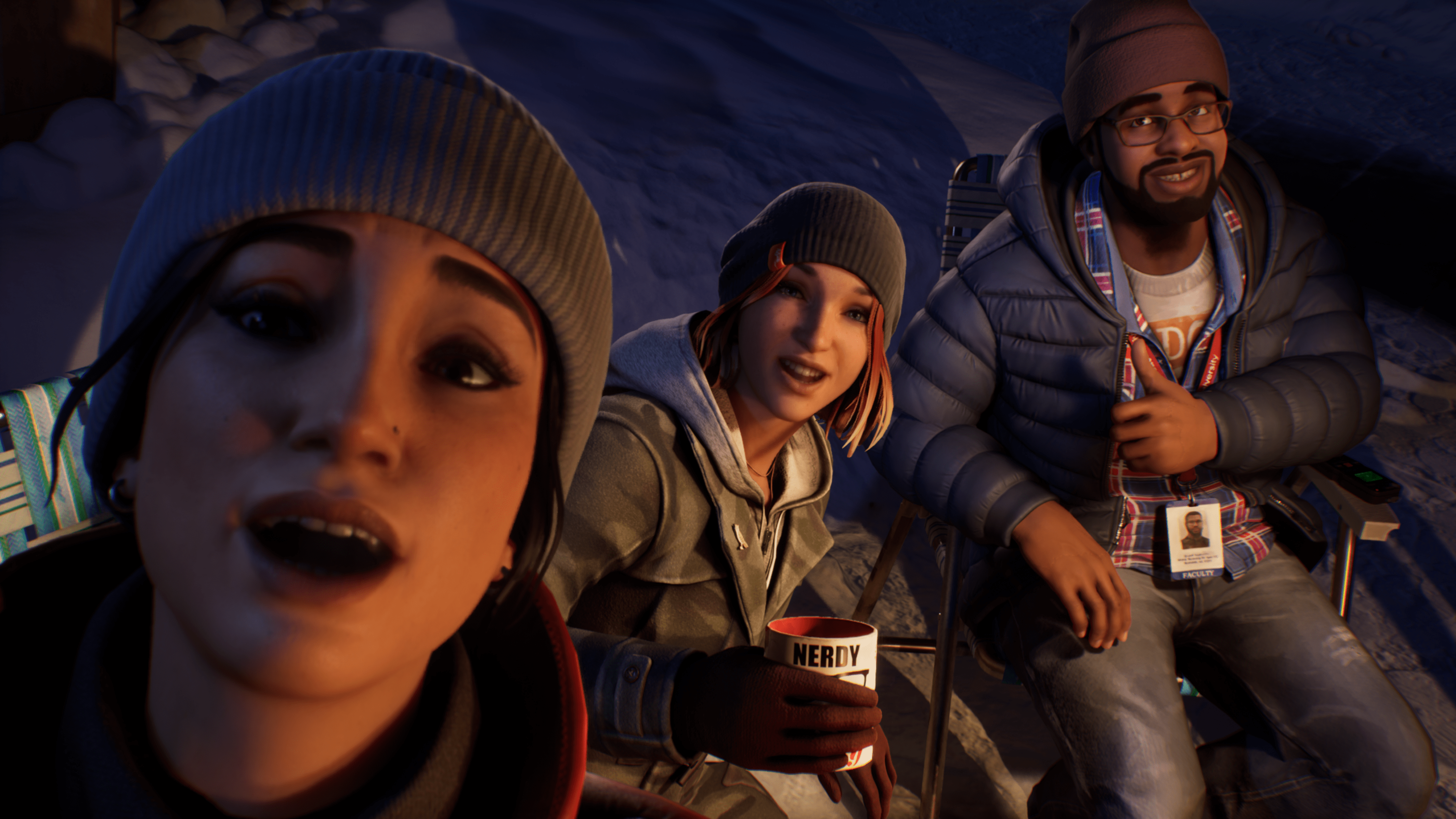
Image: Deck Nine Games/Square Enix via Polygon
As a late-20-something who still empathizes with everyone, Max is moving on from the introverted idiosyncrasies that defined her as an 18-year-old, but she is still traumatized by the casualties of Arcadia Bay, which has made her a recluse whenever she reminisces about Chloe Price and other aspects of her life that have become “a was.” Max still struggles to process loss, heartache, and every other complicated emotion that makes her feel like a tiny dot that doesn’t fit in with the RGB values of the world around her, but her new powers provide her a way to process the different stages of grief and fully accept responsibility for her own choices.
It’s difficult to discuss her arc without veering into spoilers, but Deck Nine’s proclivity for world-building is still A-tier. Double Exposure’s visuals are an absolute delight as Lakeport blends the color palette of Haven Springs and the cinematography of Before the Storm to create a midwinter landscape that’s equal parts Donnie Darko, Teen Wolf, and The Girl Who Leapt Through Time. It makes for a setting that is less about subtlety and all for stoned garden gnomes, LGBTQ bowling leagues, Krampus parties, true-crime podcasts, and sanctums like the Snapping Turtle — a campus bar lined with whiskey and intricate murals drawn from identity and multiculturalism that recall works from visual artists like Ola Volo, Tristan Eaton, and Mariell Guzman. And then there’s the music — whereas previous Life Is Strange installments upped the cozy tragedy genre with songs from Bonobo, Daughter, and Angus & Julia Stone, Double Exposure muses intimacy with NewDad, Chloe Moriondo, Tessa Rose Jackson, and a Feel For Music jukebox filled with in-house tunes that explores varying degrees of “indie sleaze” throughout the entirety of the different timelines.
The voice talent and screenplay are where the sequel really shines. Hannah Telle reprises her role as Max and is joined by an excellent supporting cast, which includes Safi (Olivia AbiAssi), Moses (Blu Allen), Amanda (Samantha Bowling), Diamond (Ilasiea Gray), and Gwen (Rachel Crowl) — all of whom contribute to Double Exposure’s blunt but bittersweet moments and not-true-crime support group fanfiction. The narrative’s restraint supports more honest discussions about loneliness, emotional stakes, the cost of relationships, and l’esprit de l’escalier, and while there is certainly room for more, these themes are aided by the player’s ability to reveal more context and clues by replying to text messages and keeping tabs on friends through an in-game social media platform called Crosstalk. Unlike in the first Life Is Strange, Max can also use her analog instant camera, a Polaroid Now Generation 2 i-Type, to take in-game “snapshots” of impromptu moments around Caledon. It’s an addition that could have used more functions like filters, flashes, and adjustable aperture ranges and shutter speeds for added immersion, but her camera is integrated with a double exposure feature that is integral to creating two divergent experiences across the game’s five chapters.
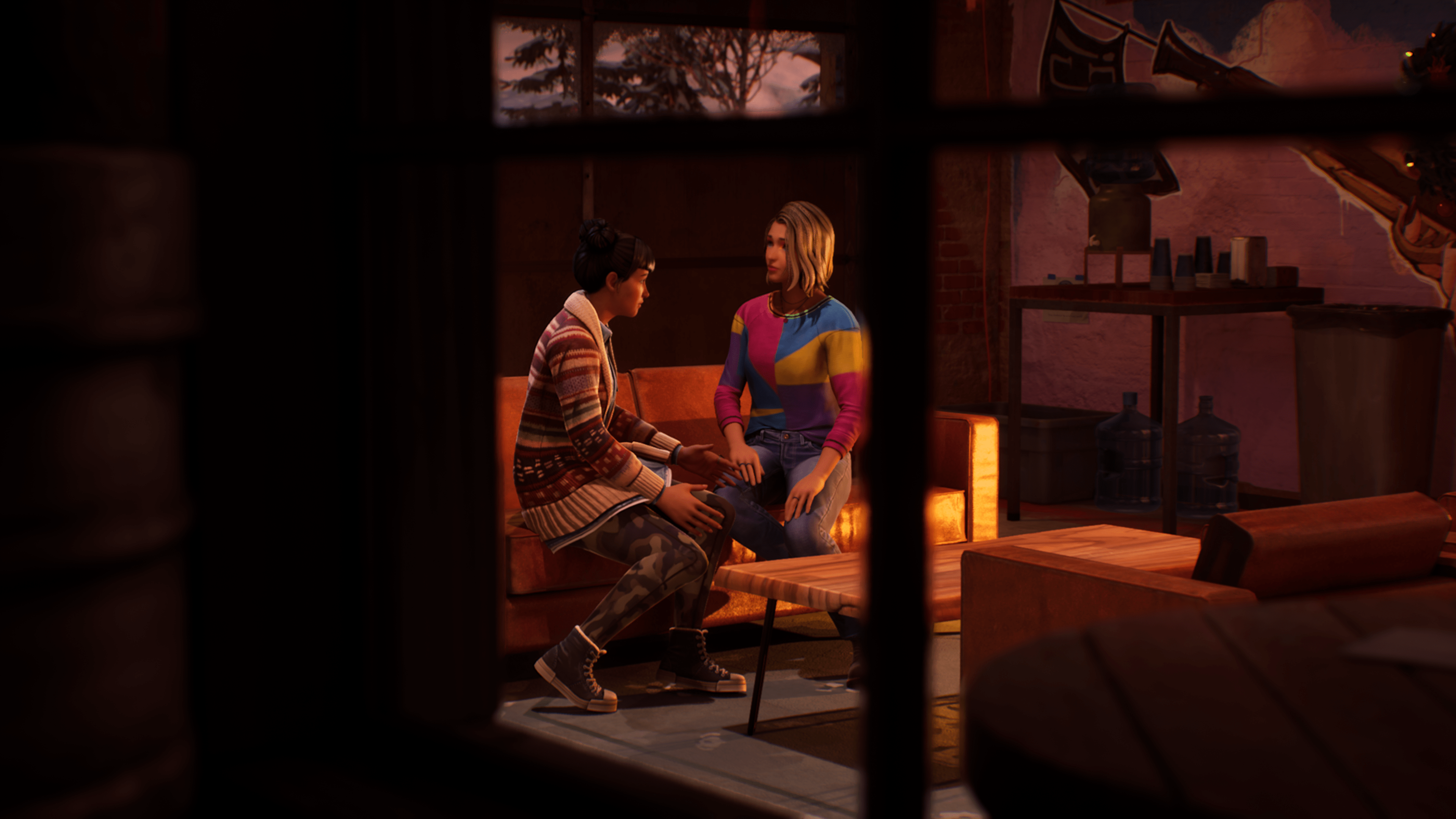
Image: Deck Nine Games/Square Enix via Polygon
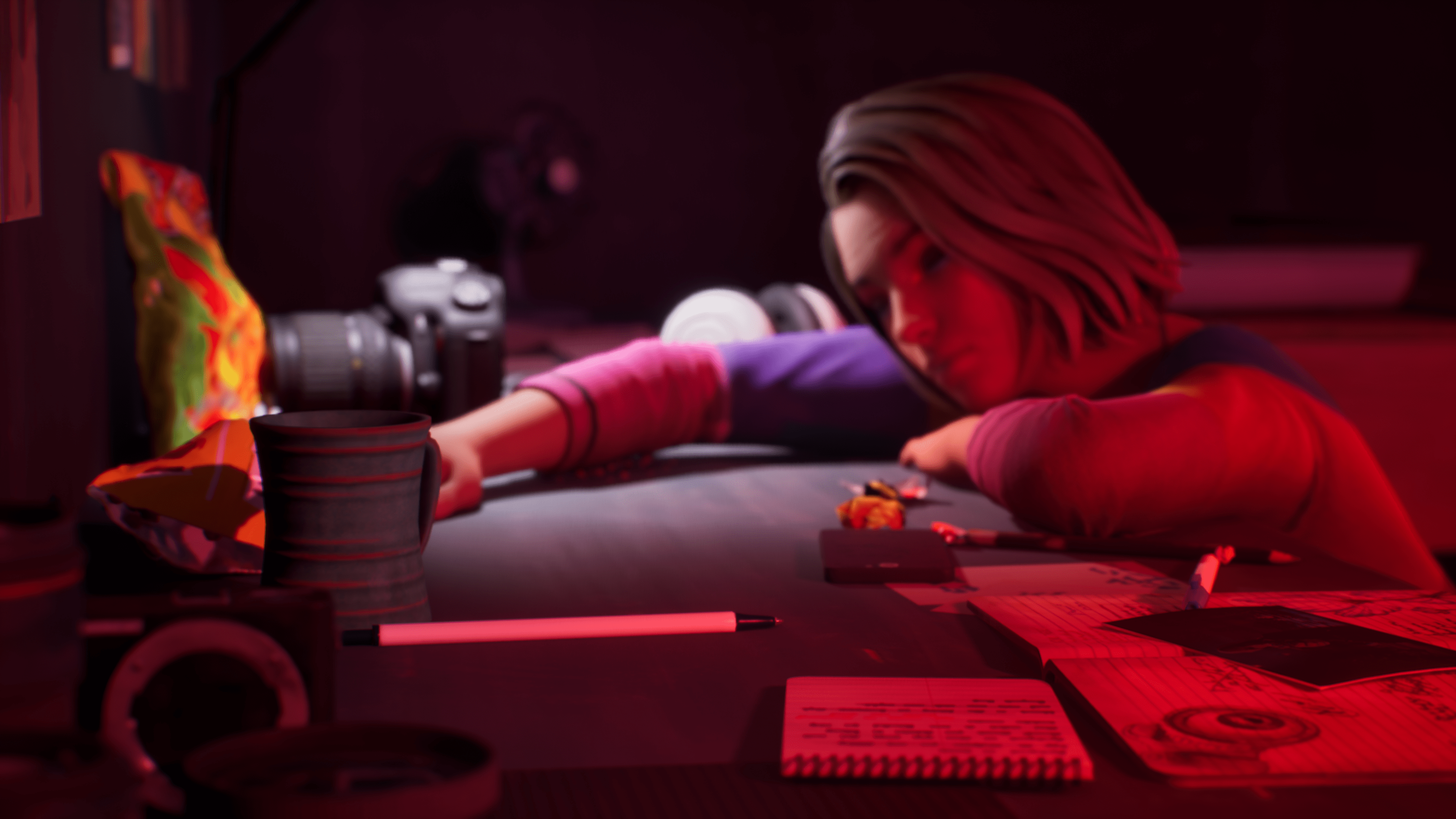
Image: Deck Nine Games/Square Enix via Polygon
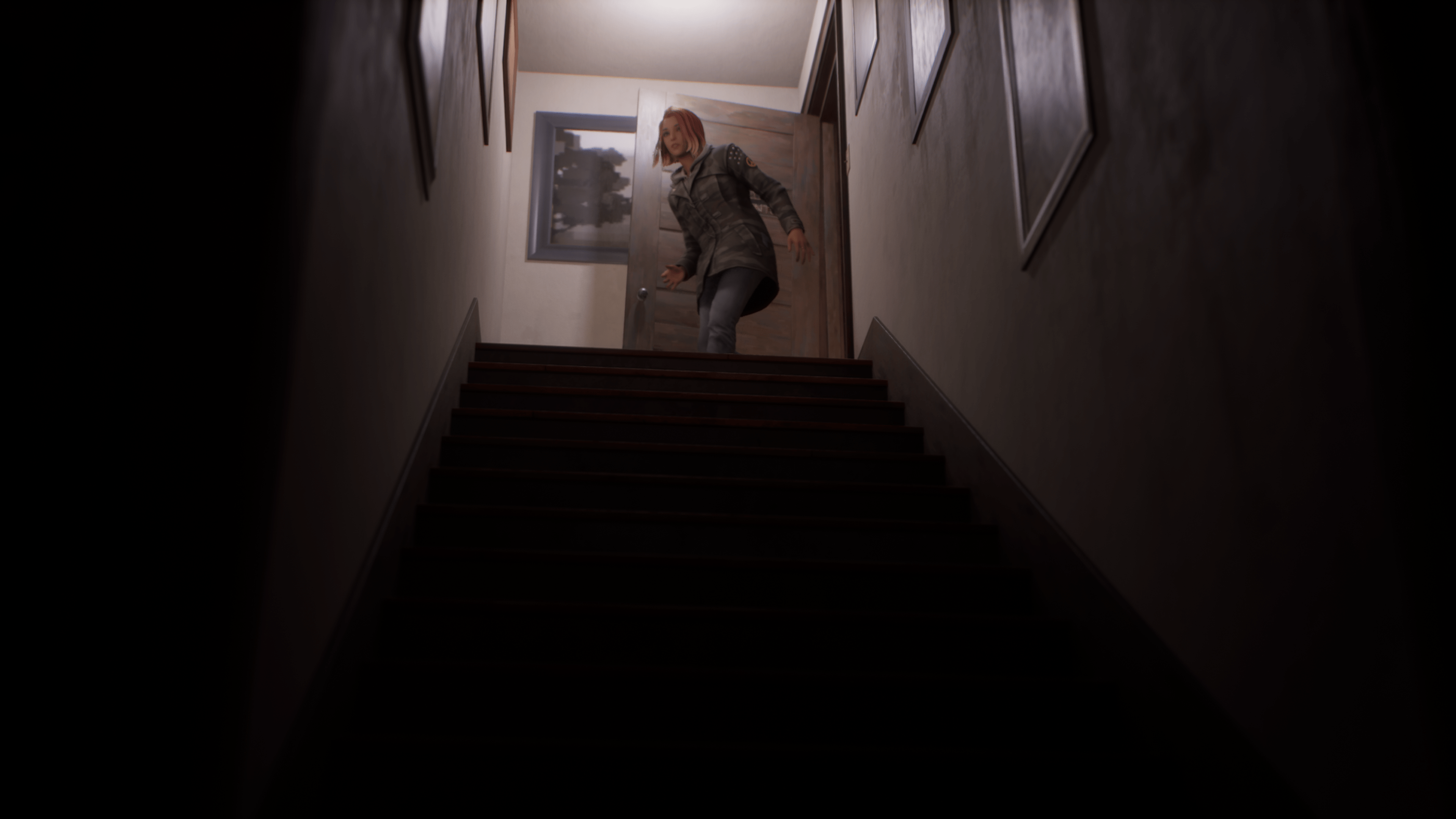
Image: Deck Nine Games/Square Enix via Polygon
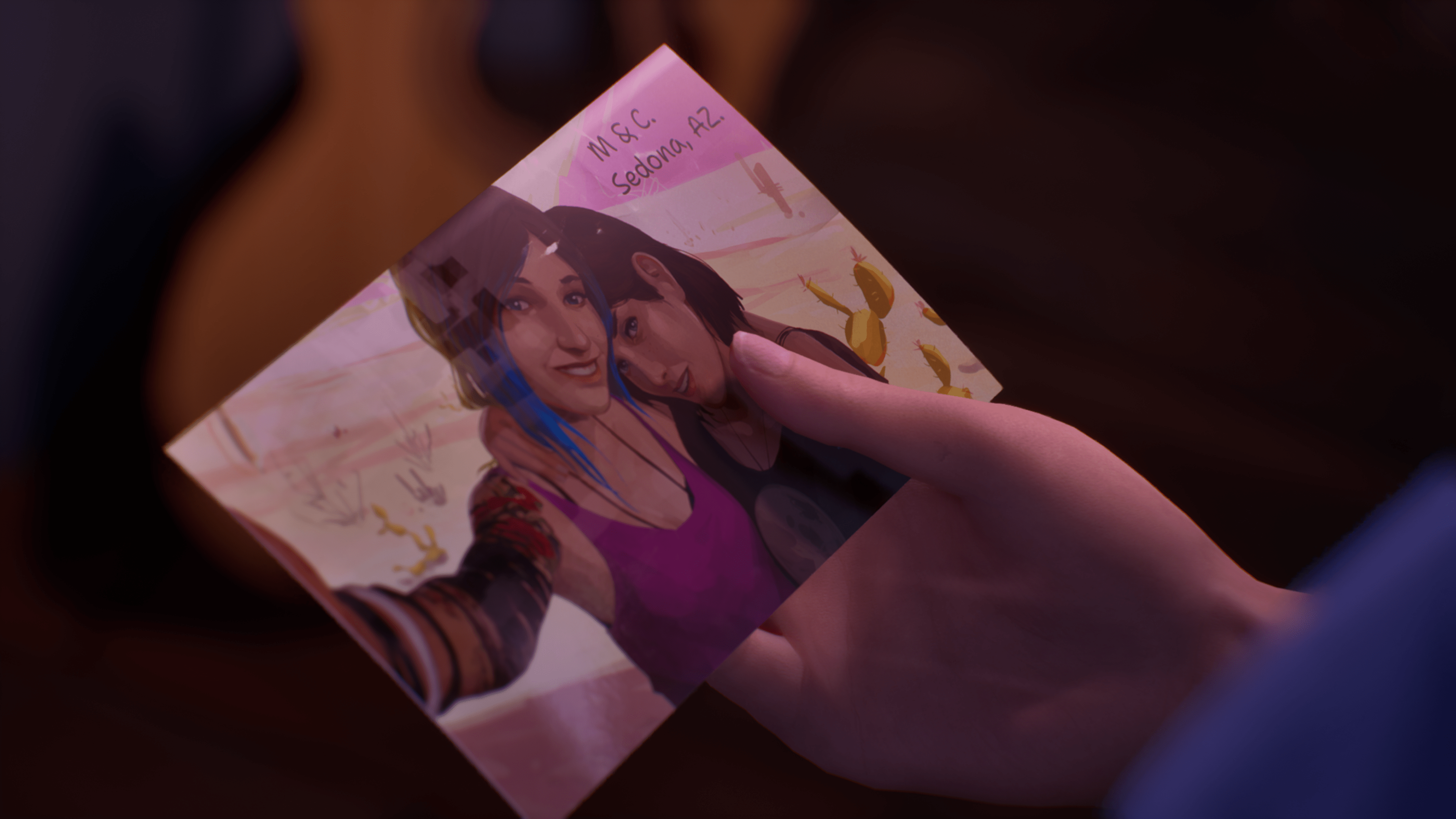
Image: Deck Nine Games/Square Enix via Polygon
There are very few situations in Double Exposure that feel disconnected, as the only glaring lens flares are its pacing and reluctance to go off the deep end in the most Lynchian way possible. Its run time barely tops 12 hours — if you don’t choose to do an entirely different second playthrough — and while Deck Nine’s designers have created a game that respects whichever ending you considered canon in Don’t Nod’s original, the everlasting thread of loose ends across two parallel timelines can feel like a dream sequence you never signed up for. Double Exposure shouldn’t be viewed as an injustice to Max’s narrative, especially when relationships and romantic interests are driven by player choice now more than ever, but it’s hard to ignore the details that could have added to its abstract storytelling. Or at least pushed the pendulum in a direction that’s in the style of House of Leaves and The New Weird.
Double Exposure is still a gorgeous and brilliantly written thriller that deserves attention. It doesn’t do anything groundbreaking, but it’s a new installment in the Life Is Strange series that examines Max Caulfield’s split from Arcadia Bay, her struggle with being hung up on the past, and how she has slowly embraced a stronger level of self-acceptance — despite a complicated track record of death always finding a way back to her. It may not be the continuation of “Max and Chloe forever” that many fans (understandably) wanted, but it’s a compelling adventure that underlines how flaws can build character — whether it’s by serving as motivation to fix old habits or to dream about the future.
Life Is Strange: Double Exposure was released Oct. 29 on Nintendo Switch, PlayStation 5, Windows PC, and Xbox Series X. The game was reviewed on PlayStation 5 using a pre-release download code provided by Deck Nine Games. Vox Media has affiliate partnerships. These do not influence editorial content, though Vox Media may earn commissions for products purchased via affiliate links. You can find additional information about Polygon’s ethics policy here.
